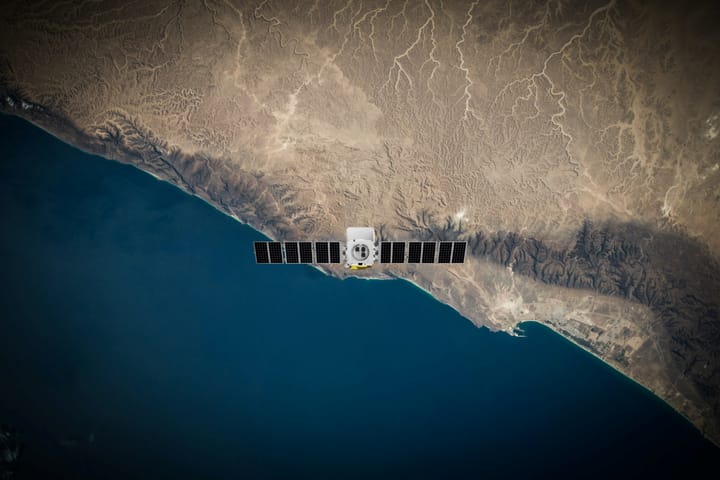Were all the natural disasters in 2021 caused by climate change?

A few minutes every morning is all you need.
Stay up to date on the world's Headlines and Human Stories. It's fun, it's factual, it's fluff-free.
According to a report by the World Meteorological Organization and the United Nations earlier this year, “Climate change and increasingly extreme weather events have caused a surge in natural disasters over the past 50 years, disproportionately impacting poorer countries.”
What natural disasters were there in 2021?
- Well, there were many, but there were some big ones that captured news headlines around the world.
- A winter storm hit Texas and surrounding states in February of this year, killing 125 people and leaving millions without power and heat for days.
- In March, Beijing had to ground flights due to the worst sandstorm to hit the city in a decade.
- Over the summer, nearly the entire western part of the United States and even southwestern Canada had intense droughts and wildfires, and the smoke made its way across the continent.
- In July, both Germany and China’s Henan province saw catastrophic flooding, killing hundreds overall.
- And in the last few months, storms have gripped North America, with hurricanes Ida and Henri hitting the gulf and east coasts. Kentucky also had a massive tornado that went for more than 220 miles and killed around 80 people.
- This is just a glimpse of the natural disasters we’ve dealt with this year. There have also been droughts and flooding in Africa, melting permafrost in Russia, melting ice in the arctic and dozens of other events.
What’s climate change again?
- Climate change is the long-term change in weather patterns globally, which has mostly been linked to the greenhouse effect.
- The greenhouse effect means that the more we emit gasses like carbon dioxide into the atmosphere, the more a layer that traps heat within the atmosphere builds up.
- Some of this is good because if we didn’t trap some of the heat we get from the sun, the earth would be cold and uninhabitable.
- But because of human-made emissions, the greenhouse effect is getting stronger, meaning that the planet as a whole is getting too warm.
- So now, average temperatures are rising worldwide, causing extreme weather events.
Were all the natural disasters from 2021 caused by climate change?
- Well, it’s pretty hard to draw direct lines for any single event to climate change, but scientists know climate change is making natural disasters more common and more extreme.
- According to a report by the World Meteorological Organization and the United Nations earlier this year, “Climate change and increasingly extreme weather events have caused a surge in natural disasters over the past 50 years, disproportionately impacting poorer countries.”
- For some events, specifically, like droughts, wildfires and floods – the connection to climate change is relatively strong.
- According to the United States Geological Survey, “With increasing global surface temperatures, the possibility of more droughts and increased intensity of storms will likely occur.”
- For other events, like the recent tornado in Kentucky, the connection is a little harder to draw. This is because events like these happen less frequently, so there’s less data for scientists to use to draw firm conclusions.
- But the bottom line is that climate change is more of an overarching factor in making these worse rather than a direct effect of any single event.
Is there any hope in making these natural disasters slow down?
- Well, the bad news is that even if we managed to stop emitting any carbon at all right now, temperatures would still stay elevated for several centuries.
- It’s also very unlikely that we’ll manage to transform entirely to a carbon-neutral world overnight.
- The good news is that we’re now getting better at handling the effects of climate change on people, which means that, going forward, there will likely be fewer deaths and less destruction because of natural disasters.
- For example, because of better weather reporting systems and improved disaster management, deaths from natural disasters went from around 50,000 in the 1970s to less than 20,000 in the 2010s.
- So even though the process of reversing climate change is a long one, there are coping solutions in the interim as well.
What are we doing to fight climate change?
- You might remember that earlier this year there was a climate conference called COP26 in Glasgow, Scotland.
- Though there weren’t any massive or transformational agreements announced during this conference, countries did agree to reduce emissions from things like coal and help out the developing countries that are being affected the most by the effects of climate change.
- There were also pledges to cut methane emissions and to plant more trees, which help pull carbon out of the air.
- Still, plenty of international groups are saying there’s still work to do and that no government is really doing enough yet.
What’s next?
- Well, practically speaking, the goal is that we reduce carbon emissions to 1.5 degrees celsius of warming by 2100, which experts say would limit the worst effects of climate change.
- But experts predict that things are still going to get worse before they get better.
- Ultimately, though, the goal for everyone is simple: reduce our carbon footprint in whatever ways we can. And on the micro-level, this can mean everything from buying from low-waste companies or even going to sustainable tattoo parlors.
You drive the stories at TMS. DM us which headline you want us to explain, or email us.







Comments ()